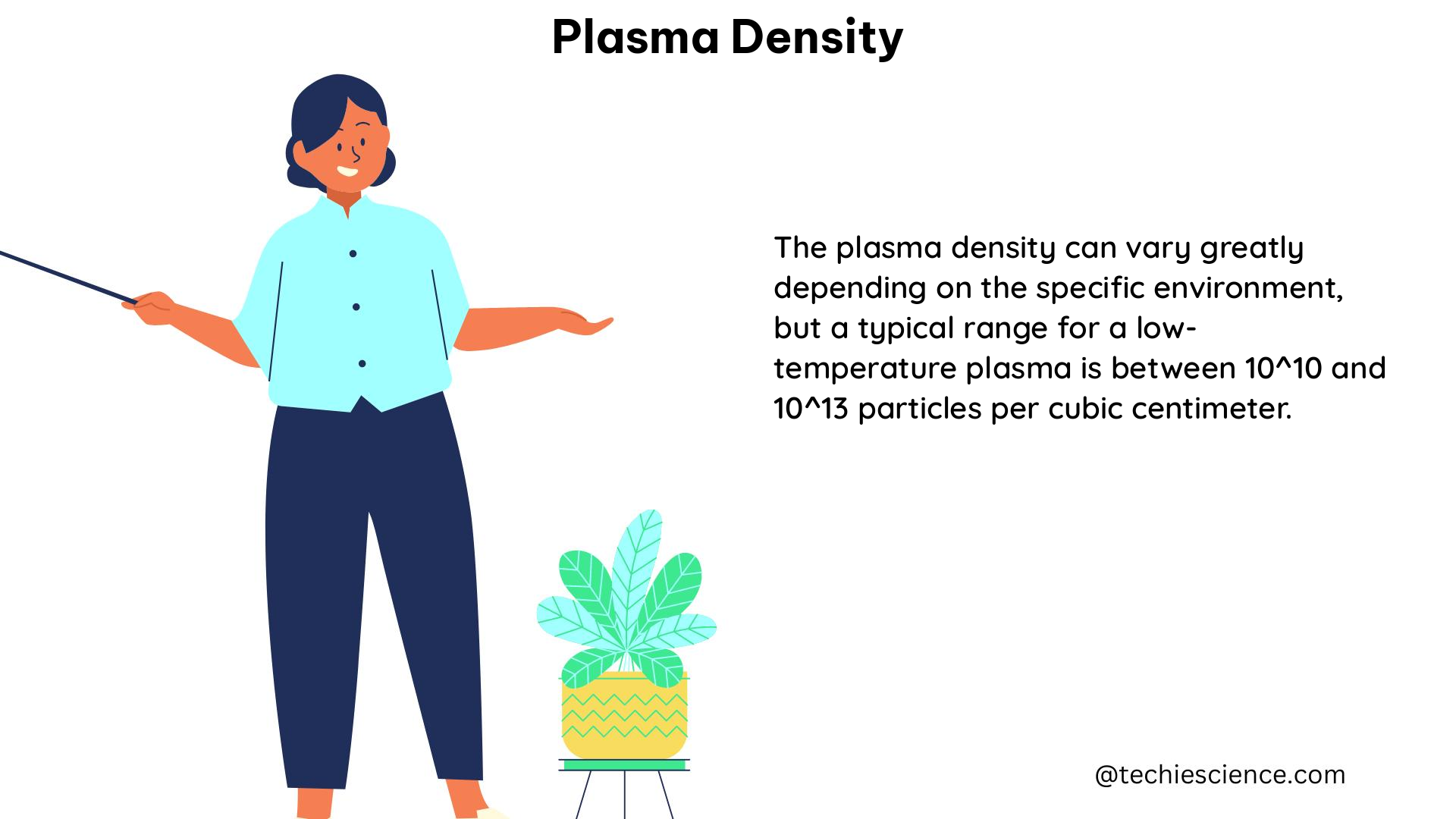Plasma density is a crucial parameter in plasma physics, as it directly affects the behavior and performance of various plasma-based technologies, such as plasma processing, fusion reactors, and space plasma environments. Accurate measurement of plasma density is essential for understanding and optimizing these systems. In this comprehensive guide, we will delve into the technical details and quantifiable data related to different plasma density measurement techniques, providing a valuable resource for physics students and researchers.
Electron Density Measurement using a Flat-Cutoff Array Sensor
One of the most widely used methods for measuring plasma density is the flat-cutoff array sensor. This technique allows for the spatial distribution of electron density on the wafer surface to be measured during wafer processing. The key technical specifications and quantifiable data are as follows:
- Measurement Uncertainty: The measurement uncertainty of the invasive-type cutoff probe is less than 1.534%, while the measurement uncertainty of the developed flat-cutoff sensor is less than 1.913%.
- Frequency Resolution: The frequency resolution of the vector network analyzer used in this method is 1.87 MHz.
- Electron Density Resolution: The electron density resolution calculated from the frequency resolution is approximately .
- Electron Density Profiles: The electron density profiles measured in the plasma bulk show a saddle shape in the radial direction and a convex shape on the wafer surface. The radial distribution near the antenna can be understood using the local electron kinetics.
Plasma Density Measurement by Means of Self-Modulation of Long Relativistic Electron Bunches

This method allows for the determination of the electron density of a plasma by measuring the periodicity of modulations introduced to the longitudinal phase space of a relativistic particle bunch by the interaction with the plasma via the self-modulation instability. The key technical specifications and quantifiable data are as follows:
- Density Range: Densities in the range of 3.6 × 10^12 cm^-3 – 7.2 × 10^15 cm^-3 have been measured using this technique.
- Measurement Accuracy: The measurement accuracy has been confirmed by comparison to spectroscopic plasma density measurements.
- Time Resolution: This method allows for the time-resolved density of a plasma at the position of beam passage, which is confirmed in particle-in-cell simulations.
Plasma Density Measurement using the Upper Hybrid Resonance Frequency
The upper hybrid resonance frequency (fUHR) is related to the plasma density (ne) by the equation:
fUHR = sqrt[(e^2/4πε0m) * (ne + ni)]
where e is the electron charge, ε0 is the permittivity of free space, m is the electron mass, and ni is the ion density. The key technical specifications and quantifiable data are as follows:
- Measurement Techniques: The fUHR can be measured using a variety of techniques, including radio frequency (RF) probes, microwave interferometry, and reflectometry.
- Plasma Density Calculation: The plasma density can be calculated from the measured fUHR using the equation above.
Plasma Density Measurement using the Langmuir Probe
The Langmuir probe is a widely used method for measuring plasma density. It involves inserting a wire electrode into the plasma and measuring the current-voltage (I-V) characteristic of the probe. The key technical specifications and quantifiable data are as follows:
- Plasma Density Calculation: The plasma density can be calculated from the I-V characteristic using the Child-Langmuir law or the floating potential method.
- Measurement Capabilities: The Langmuir probe can measure both electron and ion densities, but it is limited to measuring the plasma density in the vicinity of the probe.
- Measurement Limitations: The probe can also perturb the plasma, leading to measurement errors.
Additional Considerations and Techniques
In addition to the methods discussed above, there are other techniques and considerations for plasma density measurement:
- Optical Techniques: Optical methods, such as laser-induced fluorescence (LIF) and Thomson scattering, can provide non-invasive measurements of plasma density with high spatial and temporal resolution.
- Microwave Techniques: Microwave interferometry and reflectometry can be used to measure plasma density by analyzing the phase shift or reflection of microwave signals passing through the plasma.
- Spectroscopic Techniques: Spectroscopic methods, such as emission or absorption spectroscopy, can be used to infer plasma density from the intensity or line profiles of specific atomic or molecular transitions.
- Plasma Modeling and Simulation: Numerical simulations and modeling can be used to complement experimental measurements and provide a deeper understanding of plasma density distribution and dynamics.
Conclusion
Plasma density measurement is a critical aspect of plasma physics, and the choice of measurement technique depends on the specific application and the required measurement accuracy. This comprehensive guide has provided an in-depth look at the technical details and quantifiable data related to various plasma density measurement methods, including electrostatic, optical, and microwave techniques. By understanding the capabilities and limitations of these methods, physics students and researchers can make informed decisions and optimize their plasma-based systems.
References
- Real-time monitoring of the plasma density distribution in low-temperature industrial plasmas, AIP Advances, 2023.
- Measurement of plasma electron density by means of self-modulation of long relativistic electron bunches, IOP Science, 2019.
- Using Van Allen Probes and Arase Observations to Develop an Empirical Density Model for the Inner Zone, Journal of Geophysical Research: Space Physics, 2023.
- Plasma Density – an overview, ScienceDirect, 2022.
- An Improved Technique for Measuring Plasma Density to High Precision, The Astrophysical Journal, 2021.

The lambdageeks.com Core SME Team is a group of experienced subject matter experts from diverse scientific and technical fields including Physics, Chemistry, Technology,Electronics & Electrical Engineering, Automotive, Mechanical Engineering. Our team collaborates to create high-quality, well-researched articles on a wide range of science and technology topics for the lambdageeks.com website.
All Our Senior SME are having more than 7 Years of experience in the respective fields . They are either Working Industry Professionals or assocaited With different Universities. Refer Our Authors Page to get to know About our Core SMEs.